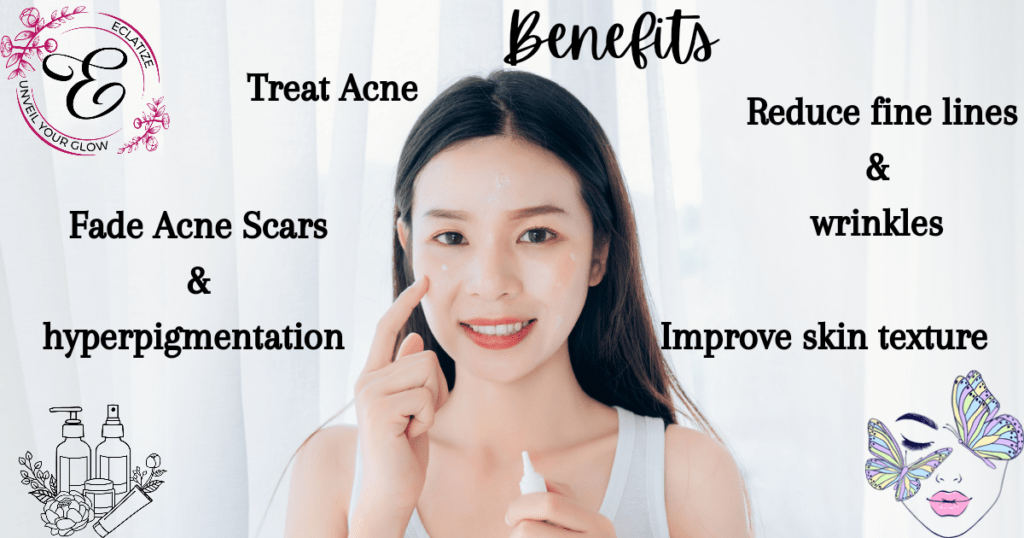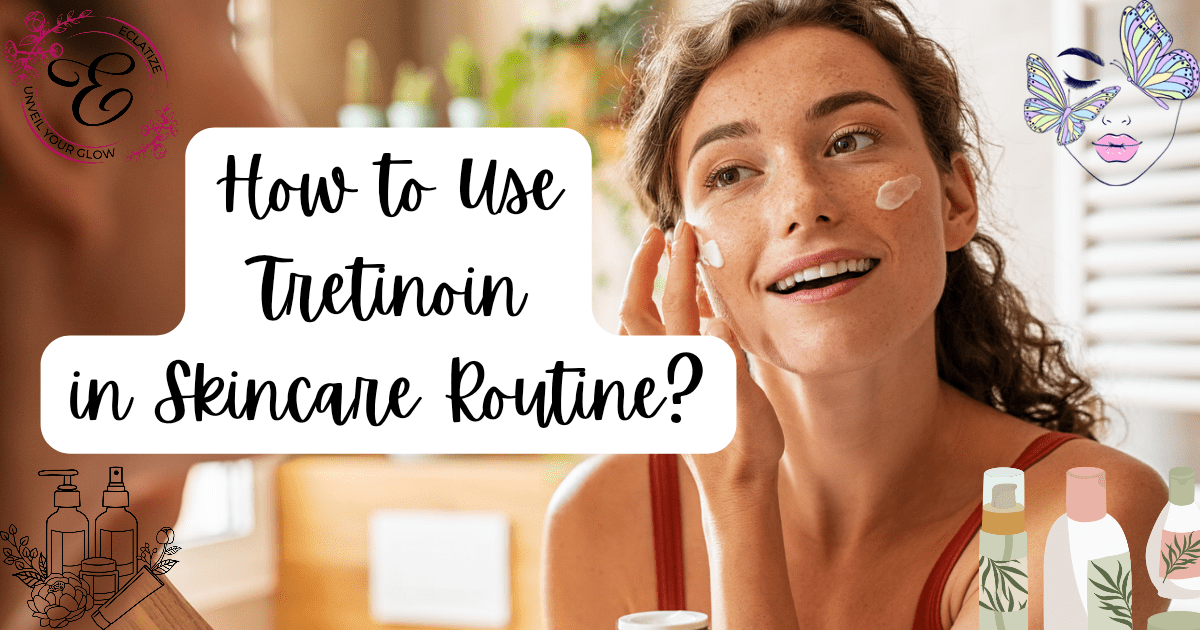Understanding how to use tretinoin in your skincare routine effectively can significantly impact your skin’s health and appearance. Tretinoin, a derivative of vitamin A, is a potent ingredient known for its ability to address various skin concerns, from acne to signs of aging. Incorporating it into your regimen requires a thoughtful approach to maximize its benefits while minimizing potential side effects.
Table of Contents
Tretinoin
Tretinoin works by increasing cell turnover, encouraging the shedding of old, damaged skin cells, and promoting the growth of new ones. This process helps unclog pores, reduce acne lesions, and improve overall skin texture and tone. Moreover, tretinoin stimulates collagen production, minimizing fine lines and wrinkles, making it a versatile addition to skincare routines aiming for smoother, youthful-looking skin.
Benefits of Using Tretinoin

The benefits of incorporating tretinoin into your skincare routine are manifold. It not only addresses acne but also helps fade acne scars and hyperpigmentation. Additionally, tretinoin aids in reducing the appearance of fine lines, wrinkles, and uneven skin texture, resulting in a more radiant complexion over time.
How to Incorporate Tretinoin
Start Slowly: When introducing tretinoin into your routine, begin with a low concentration and apply it every other night to allow your skin to acclimate.
Cleanse and Dry Skin: Apply a pea-sized amount of tretinoin to dry cleann skin. Avoid using it around the eyes, corners of the mouth, and any areas prone to irritation.
Moisturize: Follow up with a gentle, hydrating moisturizer to minimize potential dryness or irritation.
Sun Protection: Tretinoin can increase skin sensitivity to the sun. Ensure to use sunscreen daily, preferably SPF 30 or higher, when using tretinoin to protect your skin from UV damage.
Frequency and Application Tips
Gradually increase the frequency of tretinoin application as your skin becomes accustomed to it. However, it’s crucial to avoid overusing it, as excessive application can lead to irritation. Always consult a dermatologist to determine the most suitable concentration and application frequency for your skin type and concerns.
Potential Side Effects of Tretinoin
Skin Irritation: Initial use of tretinoin might cause redness, dryness, and peeling as the skin adjusts. These effects usually subside as the skin acclimates to the treatment.
Increased Sensitivity to Sun: Tretinoin can heighten skin sensitivity to sunlight, potentially leading to sunburn. Regular sunscreen application is essential to protect the skin while using tretinoin.
Stinging or Burning Sensation: Some individuals might experience a stinging or burning sensation upon application, especially if their skin is sensitive.
Excessive Dryness: Tretinoin might cause excessive dryness, especially in the initial stages of use. Adequate moisturization can help alleviate this effect.
Skin Discoloration: In rare cases, tretinoin might cause temporary skin discoloration or darkening, especially if exposed to sunlight without adequate protection.
Precautions When Using Tretinoin
Start Slowly: Begin with a lower concentration of tretinoin and gradually increase usage to allow your skin to adapt and minimize potential irritation.
Use Sun Protection: Apply sunscreen with SPF 30 or higher daily, as tretinoin can increase skin sensitivity to the sun. Limit sun exposure and wear protective clothing.
Avoid Harsh Products: Refrain from using abrasive or harsh skincare products alongside tretinoin, as they can exacerbate irritation.
Moisturize: Hydrate your skin adequately by using a gentle, non-comedogenic moisturizer to counterbalance any dryness caused by tretinoin.
Consult a Dermatologist: Seek guidance from a dermatologist to determine the appropriate tretinoin concentration and usage frequency tailored to your skin type and concerns.
Pregnancy and Breastfeeding: Avoid using tretinoin during pregnancy due to potential risks. Consult a healthcare professional for guidance if planning to use tretinoin while breastfeeding.
Combining Tretinoin with Other Products
Avoid using abrasive or harsh products alongside tretinoin, as they can exacerbate skin irritation. Instead, focus on gentle skincare products that complement tretinoin’s benefits without causing further sensitivity.
Expected Results and Long-Term Use
Results from using tretinoin typically become noticeable within a few weeks to months, depending on individual skin concerns. Consistent use and patience are key to achieving long-term improvements in skin texture, tone, and overall appearance.
Debunking Myths about Tretinoin
Debunking myths about tretinoin involves dispelling common misconceptions surrounding this skincare ingredient:
Myth: Tretinoin Is Only for Severe Acne
Fact: While tretinoin is effective for acne treatment, it’s not solely reserved for severe cases. It’s beneficial for various skin concerns like fine lines, wrinkles, and uneven skin texture, making it versatile for multiple skincare goals.
Myth: Tretinoin Shouldn’t Be Used with Other Skincare Ingredients
Fact: Contrary to this belief, tretinoin can be used alongside compatible skincare ingredients like hyaluronic acid and vitamin C. However, caution is necessary to avoid potential irritation, and it’s advisable to consult a dermatologist for a personalized routine.
Myth: Tretinoin Makes Your Skin More Sensitive to the Sun
Fact: Tretinoin can increase skin sensitivity to sunlight, making sun protection crucial. However, it doesn’t directly cause sunburn. Consistent sunscreen use is essential to safeguard your skin from UV damage while using tretinoin.
Myth: Tretinoin Offers Immediate Results
Fact: Patience is key when using tretinoin. While some may see improvements within a few weeks, significant changes often take a few months. Results vary based on individual skin concerns and adherence to a consistent skincare routine.
Myth: Tretinoin Is Suitable for All Skin Types
Fact: Tretinoin may not be suitable for everyone. Individuals with extremely sensitive or dry skin might find tretinoin too harsh. A dermatologist’s guidance can determine if tretinoin is suitable and recommend the appropriate concentration for different skin types.
Myth: Tretinoin Is Unsafe During Pregnancy or Breastfeeding
Fact: Tretinoin is generally not recommended during pregnancy due to potential risks. However, discussing its usage with a healthcare provider is essential for personalized advice, as individual circumstances may vary.
Myth: Tretinoin Leads to Excessive Skin Peeling
Fact: While tretinoin can cause initial peeling and dryness as the skin adjusts, excessive peeling is often a sign of overuse. Starting with a lower concentration and gradually increasing frequency helps minimize these effects.
Myth: Tretinoin Is Only Effective for Younger Individuals
Fact: Tretinoin’s benefits aren’t limited by age. It can benefit individuals of various ages by addressing different skin concerns, making it valuable for both younger and mature skin.
Debunking these myths helps individuals make informed decisions about incorporating tretinoin into their skincare routines, emphasizing the importance of personalized advice and understanding its diverse benefits beyond conventional beliefs.
Conclusion
In conclusion, understanding how to use tretinoin in your skincare routine empowers you to leverage its transformative benefits effectively. When used thoughtfully and under professional guidance, tretinoin can be a game-changer in achieving healthier, radiant skin.
FAQs
What is the recommended tretinoin concentration for beginners in a skincare routine?
Finding the right concentration is crucial when starting with tretinoin. Beginners often begin with lower concentrations, typically 0.025% or 0.05%, to minimize potential irritation while gradually increasing as the skin adjusts.
How long does it take to see visible results when using tretinoin in a skincare routine?
Visible improvements from using tretinoin can vary. Some individuals notice changes within a few weeks, while significant results, such as reduced acne or smoother skin texture, might take several months of consistent use.
Can tretinoin be used around the eye area in a skincare routine?
Tretinoin should be used cautiously around delicate areas like the eyes. Using a lower concentration and avoiding direct contact with the eye area helps prevent irritation. However, consulting a dermatologist for specific advice is recommended.
What are the best practices for combining tretinoin with other skincare products in a routine?
When combining tretinoin with other products, it’s essential to introduce them gradually and use non-irritating formulations. Vitamin C serums, hyaluronic acid, and gentle moisturizers are commonly combined with tretinoin, but personalized guidance from a skincare expert is beneficial.
Does tretinoin help with skin conditions other than acne in a skincare routine?
Beyond acne treatment, tretinoin is beneficial for various skin concerns, such as reducing fine lines, wrinkles, and hyperpigmentation. It can also improve overall skin texture and tone, making it versatile for addressing multiple skin issues.

